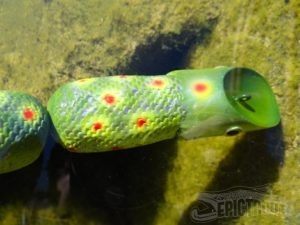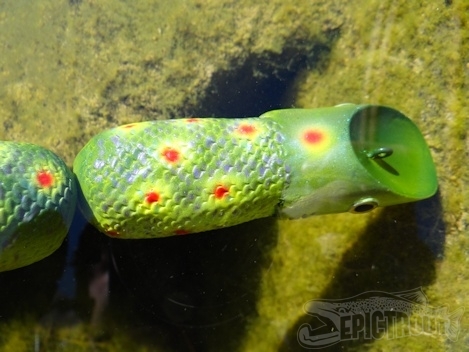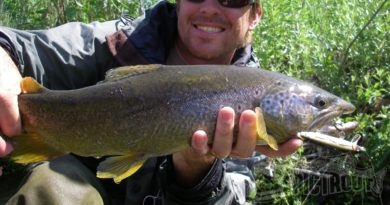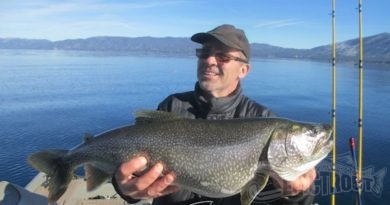funky paint jobs
Abstract Lures
I have been asked why I spend so much time looking at bait fish. The reason is because I want to present a lure that looks exactly like what the trout are feeding on. Some days trout know what they’re looking for to eat and some days they don’t. I have placed lure paint schedules into two categories .
The first type of pattern or style matches what trout are feeding on . Fly fisherman know this pattern all too well. To match the hatch can make all the difference when fishing for finicky trophy size trout.
The other one has nothing to do with trying to resemble what the trout are feeding on. This type of lure is what I call an abstract pattern. The colors can be a wild combination or just plain basic. Sometimes the lures have random spots and other times they resemble a child’s finger painting project more than a fishing lure. Abstract lures at times look nothing like a minnow . They are odd and resemble nothing a fish has ever seen before.
What I look for when painting an abstract lure is color contrast. I want my lure to stand out from the rest of the objects in the water. As we all know, we seldom encounter water that has perfect clarity. Murky water conditions affect the light’s ability to penetrate the water which, in turn, affects the overall color of the lure.
In clear water conditions, I prefer to use a more life-like looking lure, but when I’m fishing in low light, stained, or deep water conditions I tend to run abstract painted lures.

When I paint an abstract lure, I rely on a color wheel to help me pick my paint schedule. The color wheel provides a clear choice as to what colors compliment each other. For instance, if I want a dark lure to use on a cloudy day, I may paint the body violet and the color wheel tells me that the opposite color for spots should be yellow. Another alternative is to select your main color on the wheel and then use the color on each side of the main color’s compliment appearing on the color wheel. The best example for this scenario is firetiger.
One of my favorite techniques that is go outside of the box and hide an irredescent, shimmery, or ultraviolet color into my paint schedule. In most conditions this is nearly invisible to the human eye. These colors become visible again under the right conditions. For instance, consider ultraviolet. The human eye cannot detect this color, but fish can. The key is to remember that human eyes are different than trouts’ eyes. Within the human eye the retina has rods and cones. The rods detect shades of black and white while the cones register the colors. There are red, green, and blue cone receptors in the retina of the human eye. The combination of these cones offer the complete spectrum of colors.
Trout, on the other hand, have four cones. The first is similar to the human red cone, but its sensitivity range includes longer wavelengths than humans. For this reason I like to blend red into several of my lure paint schedules. Next come green then followed by blue.The fourth is invisible to humans without the help of filtered light “ultra-violet”. Ultra-violet light is the shortest wavelength of visible light. Ultra-violet light penetrates the water column deeper than normal, visible light. Shallow water has 20% natural light. As light beams descend into deeper water it becomes 100% ultra-violet light. This is all relevant to water clarity. To a fisherman, that means lures with ultra-violet added should be more visible to fish, especially in low-light conditions.


Here is the same lure. One of the photos is taken in normal light and the other photo is taken with light added from a UV filter . This will give you a good idea of what the lure will look like to a trout at low light conditions.
This lure doesn’t glow-in-the-dark . It simply reflects colors in different times . By hiding one color under another. This lure will look yellow/green out of the water. It will take on a red/gold hue in the water down to 10 to 15 feet as the lure dives deeper or the light drops the scale detail will become more apparent.
Whether you custom paint your own lures or purchase them from the store, I truly believe that at times the color of your lure can make or break your fishing success.
Epictrout will offer a more detailed article on airbrushing techniques and paints used in the future.
Brad Stout




